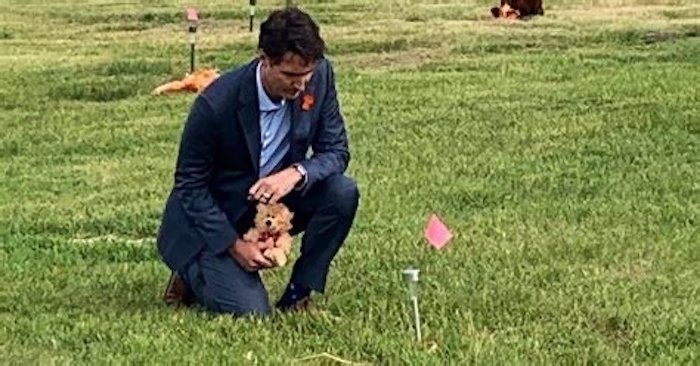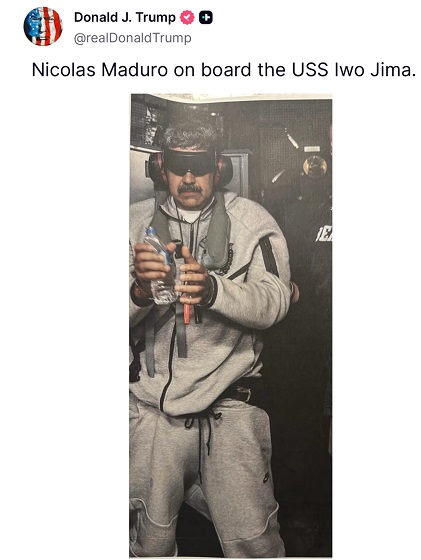Fraser Institute
Emperors of woke have no clothes and conservatives should say so

From the Frontier Centre for Public Policy
The major finding is that in Great Britain, Canada and the United States roughly one third of the population accept “woke” (progressive) views, while roughly two thirds reject those views.
However — and this is alarming — in all three countries that woke one-third controls all of the major institutions. The mainstream media, universities and civil service, for instance, are firmly controlled by the one-third woke.
Why do Conservatives go along with woke ideas, woke norms and above all woke people?
One of these days we’re going to be really sorry we didn’t stand up to this nonsense, when the proverbial little boy calls out that the emperor has no clothes. Men can be women? C’mon! You didn’t call that out at the time? Why not?
This is the question posed by Professor Eric Kaufman of England’s University of Buckingham. Kaufman, also an associate at the Ottawa-based Macdonald Laurier Institute, is a Canadian who has been living and teaching in England for the past 25 years. He has recently completed a survey on “wokeness.” (As reported here.) He was also interviewed by National Post’s rising star, Jamie Sarkonak.
Kaufman’s survey has important findings, particularly for Canada. The major finding is that in Great Britain, Canada and the United States roughly one third of the population accept “woke” (progressive) views, while roughly two thirds reject those views.
However — and this is alarming — in all three countries that woke one-third controls all of the major institutions. The mainstream media, universities and civil service, for instance, are firmly controlled by the one-third woke.
Rudi Dutschke’s long march through the institutions has arrived.
But even more concerning for Canadians should be Kaufman’s findings that pertain specifically to Canada.
That’s because he finds that while Great Britain’s Conservatives and America’s Republicans are ferociously pushing back against the extreme wokeness that is now so evident in all three countries, that is really not happening in Canada. Instead, Conservatives here have tended to knuckle under to the wokeness the Liberals so aggressively push. Any pushback has been extremely timid.
Why? How can that be? If Kaufman is right that at least two thirds of Canadians reject wokeism why is it that they have no one to represent their views?
- Is this the reason why Canada has now gained an international reputation as one of the most woke nations on earth?
- Where a Chief Justice actually feels comfortable about receiving no pushback when he claims that his Supreme Court is “the most progressive in the world”?
- And our prime minister is universally mocked as the wokest of the woke?
Does the timidity of the Conservatives on woke policies explain why the Canada we knew during the Harper and Chretien years seems to be slipping away from us?
If Kaufman’s findings are accurate, and our Conservatives are indeed submitting to woke policies — instead of representing the two thirds of Canadians who don’t want those policies — we should ask why.
Part of the reason would certainly be that the Liberals and the NDP have at every national election dishonestly attempted to use ‘socially conservative’ issues against all conservative parties — Reform, Alliance or today’s Conservative Party of Canada.
These progressive attacks were entirely spurious: conservatives have consistently stayed away from any discussion of limiting abortion access, or reversing gay marriage rights. Yet, the suggestion of a secret agenda of radical reforms is trotted out at every election, and in some eastern swing ridings appears to have been effective in keeping seats out of conservative hands.
Perhaps not surprisingly then, conservatives have consistently preferred to concentrate on bread and butter issues, and avoid the culture wars now raging.
However, with an increasingly assertive left insistent on imposing a woke agenda — even to the extent of approving a 50-year-old man sharing a locker room with teenage age girls, this preference to stay out of the fray is no longer available to them.
The example of Scott Moe’s introduction of his parents’ rights legislation is a clear sign that provincial conservatives realize that they must enter the fray. So is Alberta Premier Danielle Smith’s statement that in Alberta, sex-change operations on children under 18 years of age will not be allowed. (A decision that surprised many, given the premier’s known libertarian predilections.)
In Ontario, education minister Stephen Lecce said last year that “parents must be fully involved and fully aware of what’s happening in the life of their children.” And let’s not forget that all this started in New Brunswick, when Premier Blaine Higgs made what looks now to be a modest proposal, that children under 16 would need parental permission to change their gender at school by switching names and pronouns.
In other words, provincial politicians get it. (At last.) Federal Conservatives should go do likewise.
So what should they say?
Here are three possible responses to woke policies — on the trans issue, indigenous issues and immigration.
There is no official list of woke beliefs, but probably the most extreme is the trans issue. Woke politicians state as a fact that a man who identifies as a woman is in fact a woman. Although this claim is quite astounding to the non-woke — who know it to be untrue — the woke accept it as gospel. Prime Minister Trudeau himself famously tweeted, “A trans woman is a woman.”
If tweets were just words in the blogosphere this wouldn’t matter. However, when the nation’s leader says the words they have consequences. So, Canada now has men in women’s prisons, men in women’s sports and most alarmingly — children having body parts removed and being administered life-altering drugs — all based on this single nonsensical woke belief that men can become women by saying so.
The Conservatives should directly confront this dangerous nonsense. Obviously, they should craft their message in measured tones. But this can be easily accomplished, when the woke belief they are correcting is so obviously wrong.
Here is an example of a completely factual, scientifically accurate and measured statement that would probably win the approval of — if Kaufman is right — two thirds of Canadians: “A trans woman is not a woman. Conservatives respect trans people and respect their right to live their lives as they choose. However, that does not include their admission into women’s only places, such as crisis centres and jails or entry into women’s sports.”
The indigenous issue is Canada’s version of wokeism’s central belief — namely critical race theory — we see playing out to the south of us.
This is the woke belief that race is all important; that any differences and disparities between races is the result of systemic racism; and that governments must aggressively erase all such differences by the use of affirmative action type policies.
For the one third it has completely displaced the Martin Luther King “content of character” philosophy that has been gospel with the two thirds for more than half a century.
Canada’s woke version regards all indigenous Canadians as being completely different from other Canadians. According to this eugenics-like view anyone born to indigenous parents, or even partly indigenous parents, has some innate ecological awareness and abilities that non-indigenous people lack. They also — uniquely among every other racial or ethnic group on the planet — always tell the truth. Their claims must be taken as the truth.
Professor Hymie Rubenstein coins the term “indigenous exceptionalism” in From Truth Comes Reconciliation to describe this unusual woke belief. The most extreme example of this woke indigenous belief can be seen in the now three-year-old claim that 215 indigenous children were killed under sinister circumstances at the Kamloops Indian Residential School and then secretly buried by the priests and nuns who had supposedly killed them.
To make this claim even more bizarre it was claimed that children “as young as six” were forced to dig the graves.
Apart from a radar report showing soil disturbances that could just as easily be tree roots as graves, this baseless claim was not only taken seriously by our woke government, but actively promoted. Not only did the federal government lower flags for six months, they promised $320 million to any other indigenous communities who wanted to make similar baseless claims. Of course, many quickly did.
These “murder and secret burial” stories followed years of steadily escalating exaggeration of the harm done at residential schools. While there is no doubt that many children had bad experiences at residential schools, there had previously been a recognition that many children had received educations there that would otherwise have been denied to them. However, the stories of horror were ramped up, bit by bit, until many Canadians were ready to accept the preposterous Kamloops claim and the others that followed like clockwork after the Liberals incentivised them with the $320,000,000.
By now, most of the two thirds probably realize that they haven’t been told the truth by the Trudeau government or the mainstream media. The Conservatives need not be so afraid of being called “anti-indigenous” or “anti-reconciliation” when addressing this topic. Conservative opposition leader Pierre Pollievre made a good start when he said, “Canadians deserve to know the truth,“ and stressed the need for historical accuracy.
However, he then went on to pander embarrassingly to the woke view, using their language about the “horror” of residential school. That is not historical accuracy at all.
Here is the kind of thing Conservatives should say about residential schools:
“There is no doubt that many indigenous children were harmed at residential schools. They have been compensated and they deserve every penny of that compensation. There is also no doubt that there were some bad apples who taught and worked at the institutions. However, many indigenous children received educations that would otherwise have been denied to them. And the great majority of the priests, nuns, ministers and employees at the school were decent people who did their jobs honestly and well. That too should be recognized.”
Finally, and probably the most important issue of all — immigration. The woke view, as articulated by the PM in the earliest days of his new administration is that Canada is a post-national nation. No one seemed to understand the implications of what he was saying — possibly including the PM.
But when he tweeted out that Canada was open to anyone who wanted to come the implications started to become clear: a “post national” state doesn’t have borders… Anyone is welcome to simply walk in.
This is a fundamental belief of the woke. It is also an absolutely ruinous idea for any nation that wants to continue functioning. We see today how this woke no-borders idea is playing out in America. Our cold winters save us from the huge influxes seen there, but the millions coming to Canada are making houses unaffordable anyway and putting enormous pressure on services for Canadians and new immigrants alike.
Conservatives should not be afraid to call the woke “no borders, unrestricted immigration policy” crazy, because that is what it is.
Here’s a possible talking point they could use:
“Canada is a nation of immigrants. We have always needed immigrants, and we always will. We welcome new immigrants from all parts of the world. However, in the past few years too many have come too fast. The pressure on housing affordability and services are hurting both resident Canadians and new immigrants alike. For that reason in the first year after we take power there will be a one-year moratorium on new immigration. During that time we will both implement policies to make houses more affordable and determine what immigration numbers should be in the next decade. Canada is not a post-national state with no core identity. It is a nation with a distinct culture, an honourable history and it needs borders and a policy of controlled immigration to preserve that culture and identity.”
I think that the two thirds would welcome such an approach. And vote for it.
We don’t have to live with ignorance enthroned.
Brian Giesbrecht, retired judge, is a senior fellow at the Frontier Centre for Public Policy. First published here.
Business
Virtue-signalling devotion to reconciliation will not end well

From the Fraser Institute
By Bruce Pardy
In September, the British Columbia Supreme Court threw private property into turmoil. Aboriginal title in Richmond, a suburb of Vancouver, is “prior and senior” to fee simple interests, the court said. That means it trumps the property you have in your house, farm or factory. If the decision holds up on appeal, it would mean private property is not secure anywhere a claim for Aboriginal title is made out.
If you thought things couldn’t get worse, you thought wrong. On Dec. 5, the B.C. Court of Appeal delivered a different kind of upheaval. Gitxaala and Ehattesaht First Nations claimed that B.C.’s mining regime was unlawful because it allowed miners to register claims on Crown land without consulting with them. In a 2-to-1 split decision, the court agreed. The mining permitting regime is inconsistent with the United Nations Declaration on the Rights of Indigenous People (UNDRIP). And B.C. legislation, the court said, has made UNDRIP the law of B.C.
UNDRIP is a declaration of the United Nations General Assembly. It consists of pages and pages of Indigenous rights and entitlements. If UNDRIP is the law in B.C., then Indigenous peoples are entitled to everything—and to have other people pay for it. If you suspect that is an exaggeration, take a spin through UNDRIP for yourself.
Indigenous peoples, it says, “have the right to the lands, territories and resources which they have traditionally owned, occupied or otherwise used or acquired… to own, use, develop and control, as well as the right to “redress” for these lands, through either “restitution” or “just, fair and equitable compensation.” It says that states “shall consult and cooperate in good faith” in order to “obtain free and informed consent prior to the approval of any project affecting their lands or territories and other resources,” and that they have the right to “autonomy or self-government in matters relating to their internal and local affairs, as well as ways and means for financing their autonomous functions.”
The General Assembly adopted UNDRIP in 2007. At the time, Canada sensibly voted “no,” along with New Zealand, the United States and Australia. Eleven countries abstained. But in 2016, the newly elected Trudeau government reversed Canada’s objection.
UN General Assembly resolutions are not binding in international law. Nor are they enforceable in Canadian courts. But in 2019, NDP Premier John Horgan and his Attorney General David Eby, now the Premier, introduced Bill 41, the Declaration on the Rights of Indigenous Peoples Act (DRIPA). DRIPA proposed to require the B.C. government to “take all measures necessary to ensure the laws of British Columbia are consistent with the Declaration.” The B.C. Legislature unanimously passed the bill. (The Canadian Parliament passed a similar bill in 2021.)
Two years later, the legislature passed an amendment to the B.C. Interpretation Act. Eby, still B.C.’s Attorney General, sponsored the bill. The amendment read, “Every Act and regulation must be construed as being consistent with the Declaration.”
Eby has expressed dismay about the Court of Appeal decision. It “invites further and endless litigation,” he said. “It looked at the clear statements of intent in the legislature and the law, and yet reached dramatically different conclusions about what legislators did when we voted unanimously across party lines” to pass DRIPA. He has promised to amend the legislation.
These are crocodile tears. The majority judgment from the Court of Appeal is not a rogue decision from activist judges making things up and ignoring the law. Not this time, anyway. The court said that B.C. law must be construed as being consistent with UNDRIP—which is what Eby’s 2021 amendment to the Interpretation Act says.
In fact, Eby’s government has been doing everything in its power to champion Aboriginal interests. DRIPA is its mandate. It’s been making covert agreements with specific Aboriginal groups over specific territories. These agreements promise Aboriginal title and/or grant Aboriginal management rights over land use. In April 2024, an agreement with the Haida Council recognized Haida title and jurisdiction over Haida Gwaii, an archipelago off the B.C. coast formerly known as the Queen Charlotte Islands. Eby has said that the agreement is a template for what’s possible “in other places in British Columbia, and also in Canada.” He is putting title and control of B.C. into Aboriginal hands.
But it’s not just David Eby. The Richmond decision from the B.C. Supreme Court had nothing to do with B.C. legislation. It was a predictable result of years of Supreme Court of Canada (SCC) jurisprudence under Section 35 of the Constitution. That section guarantees “existing” Aboriginal and treaty rights as of 1982. But the SCC has since championed, evolved and enlarged those rights. Legislatures can fix their own statutes, but they cannot amend Section 35 or override judicial interpretation, even using the “notwithstanding clause.”
Meanwhile, on yet another track, Aboriginal rights are expanding under the Charter of Rights and Freedoms. On the same day as the B.C. Court of Appeal decision on UNDRIP, the Federal Court released two judgments. The federal government has an actionable duty to Aboriginal groups to provide housing and drinking water, the court declared. Taxpayer funded, of course.
One week later, at the other end of the country, the New Brunswick Court of Appeal weighed in. In a claim made by Wolastoqey First Nation for the western half of the province, the court said that Aboriginal title should not displace fee simple title of private owners. Yet it confirmed that a successful claim would require compensation in lieu of land. Private property owners or taxpayers, take your pick.
Like the proverb says, make yourself into a doormat and someone will walk all over you. Obsequious devotion to reconciliation has become a pathology of Canadian character. It won’t end well.
Business
The great policy challenge for governments in Canada in 2026

From the Fraser Institute
According to a recent study, living standards in Canada have declined over the past five years. And the country’s economic growth has been “ugly.” Crucially, all 10 provinces are experiencing this economic stagnation—there are no exceptions to Canada’s “ugly” growth record. In 2026, reversing this trend should be the top priority for the Carney government and provincial governments across the country.
Indeed, demographic and economic data across the country tell a remarkably similar story over the past five years. While there has been some overall economic growth in almost every province, in many cases provincial populations, fuelled by record-high levels of immigration, have grown almost as quickly. Although the total amount of economic production and income has increased from coast to coast, there are more people to divide that income between. Therefore, after we account for inflation and population growth, the data show Canadians are not better off than they were before.
Let’s dive into the numbers (adjusted for inflation) for each province. In British Columbia, the economy has grown by 13.7 per cent over the past five years but the population has grown by 11.0 per cent, which means the vast majority of the increase in the size of the economy is likely due to population growth—not improvements in productivity or living standards. In fact, per-person GDP, a key indicator of living standards, averaged only 0.5 per cent per year over the last five years, which is a miserable result by historic standards.
A similar story holds in other provinces. Prince Edward Island, Nova Scotia, Quebec and Saskatchewan all experienced some economic growth over the past five years but their populations grew at almost exactly the same rate. As a result, living standards have barely budged. In the remaining provinces (Newfoundland and Labrador, New Brunswick, Ontario, Manitoba and Alberta), population growth has outstripped economic growth, which means that even though the economy grew, living standards actually declined.
This coast-to-coast stagnation of living standards is unique in Canadian history. Historically, there’s usually variation in economic performance across the country—when one region struggles, better performance elsewhere helps drive national economic growth. For example, in the early 2010s while the Ontario and Quebec economies recovered slowly from the 2008/09 recession, Alberta and other resource-rich provinces experienced much stronger growth. Over the past five years, however, there has not been a “good news” story anywhere in the country when it comes to per-person economic growth and living standards.
In reality, Canada’s recent record-high levels of immigration and population growth have helped mask the country’s economic weakness. With more people to buy and sell goods and services, the overall economy is growing but living standards have barely budged. To craft policies to help raise living standards for Canadian families, policymakers in Ottawa and every provincial capital should remove regulatory barriers, reduce taxes and responsibly manage government finances. This is the great policy challenge for governments across the country in 2026 and beyond.
-

 International2 days ago
International2 days ago“Captured and flown out”: Trump announces dramatic capture of Maduro
-

 International2 days ago
International2 days agoTrump Says U.S. Strike Captured Nicolás Maduro and Wife Cilia Flores; Bondi Says Couple Possessed Machine Guns
-

 Energy2 days ago
Energy2 days agoThe U.S. Just Removed a Dictator and Canada is Collateral Damage
-

 International2 days ago
International2 days agoUS Justice Department Accusing Maduro’s Inner Circle of a Narco-State Conspiracy
-

 Haultain Research2 days ago
Haultain Research2 days agoTrying to Defend Maduro’s Legitimacy
-

 Business2 days ago
Business2 days agoVacant Somali Daycares In Viral Videos Are Also Linked To $300 Million ‘Feeding Our Future’ Fraud
-

 International2 days ago
International2 days agoU.S. Claims Western Hemispheric Domination, Denies Russia Security Interests On Its Own Border
-

 Daily Caller1 day ago
Daily Caller1 day agoTrump Says US Going To Run Venezuela After Nabbing Maduro





